
When the railway was extended to Marieville in 1913, the Montreal & Southern Counties Railway agreed to establish a flag stop where the line meets Chemin du Ruisseau-Barré. Just like other stops along this railway, it features a wooden platform beside the tracks that welcomes passengers. Sometimes the farmers in the vicinity will form a work team and build a small shelter. At the same time, the adjacent parcel of land is cleared to accommodate horse-drawn carts. Years later, it will be a parking zone for cars and trucks. Before he reaches any level crossing of a road or range, the motorman will always sound the whistle or horn to signal the coming of the train.
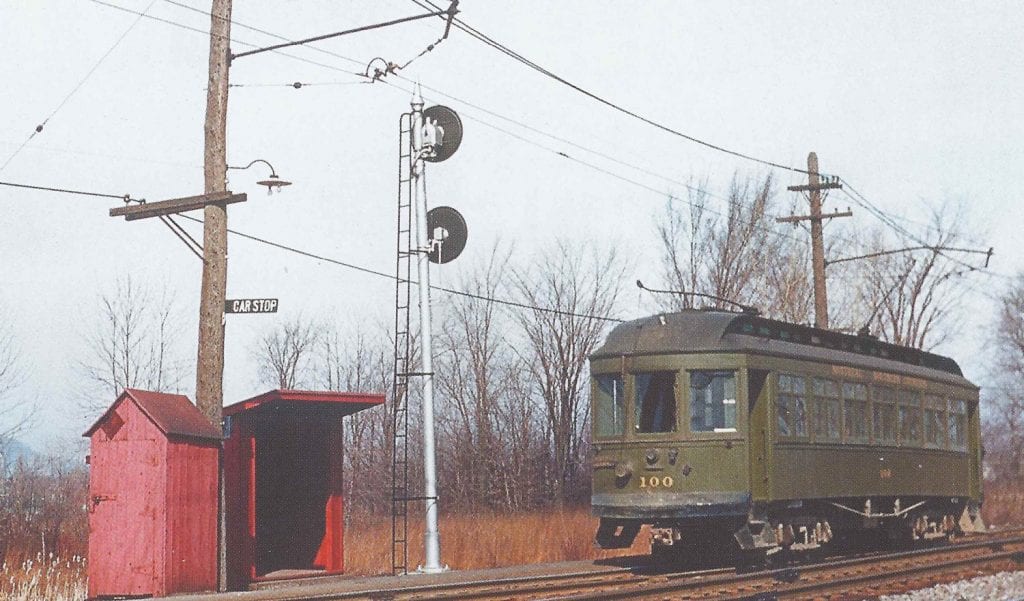
A shelter with its small platform, shown with Car 100 (built in 1911 and modified in 1912) alongside the tracks near Saint-Lambert.
Starting in Montreal from the McGill Street Terminal (located at the corner of Rue Marguerite-d’Youville), each streetcar crosses over the Victoria Bridge and travels 47 miles (around 75 km) to Granby. There are 37 stations and flag stops along its route, which takes about two hours to travel. As we can see on the timetable below, most of the stations and stops have English names. The small italic F next to a time indicates F Stop on Signal—the traveller must signal to the motorman, with a red flag, that they wish to board the streetcar at this stop. This electric streetcar service will disappear from the Ruisseau Barré flag stop on October 13, 1956.
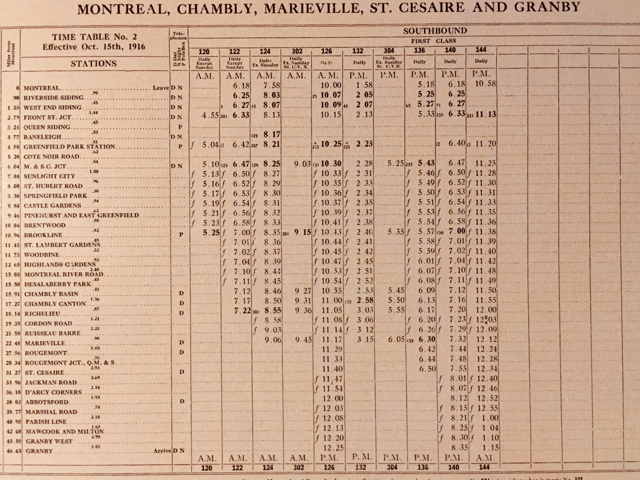
Timetable for the Montreal & Southern Counties Railway, effective October 15, 1916.

This sketch from 1915 shows the design of a Montreal & Southern Counties Railway wagon for transporting milk cans and other freight.
The Montreal & Southern Counties Railway sees it will benefit from providing farmers in the region with as much service as possible along the line between Montreal and Granby. Since the last quarter of the 19th century, Quebec agriculture has been changing. Cheese and butter dairies multiply during this period, and the landscape of the Quebec countryside changes accordingly. The train will become the modern and safe way to transport hundreds of milk cans every day to butter and cheese dairies, and to sell excess hay fodder to the United States.
From the very beginning of its electric railway line, the Montreal & Southern Counties Railway uses specially designed cars for transporting milk and freight between Montreal and Granby.
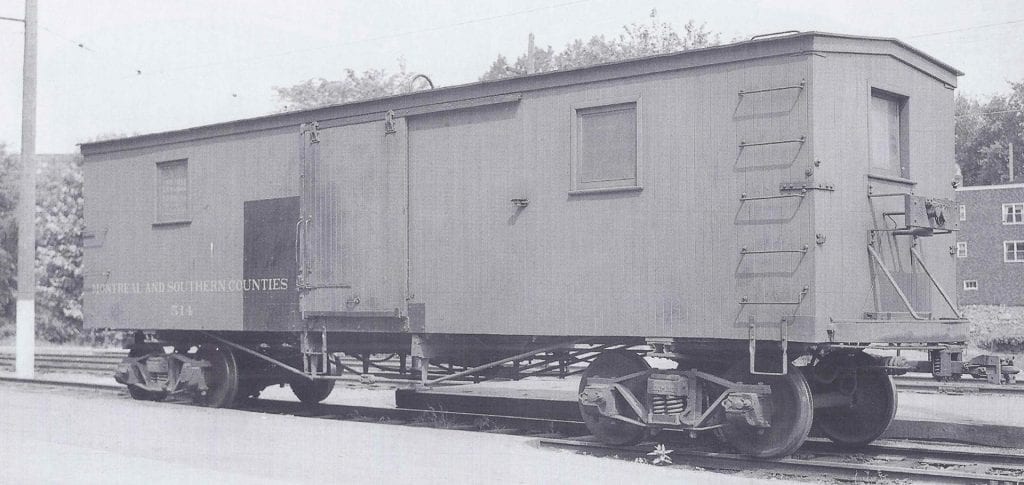
Wagon 514 was a Milk & Express Car for transporting milk cans. It is easily recognized by its green and gold paint.
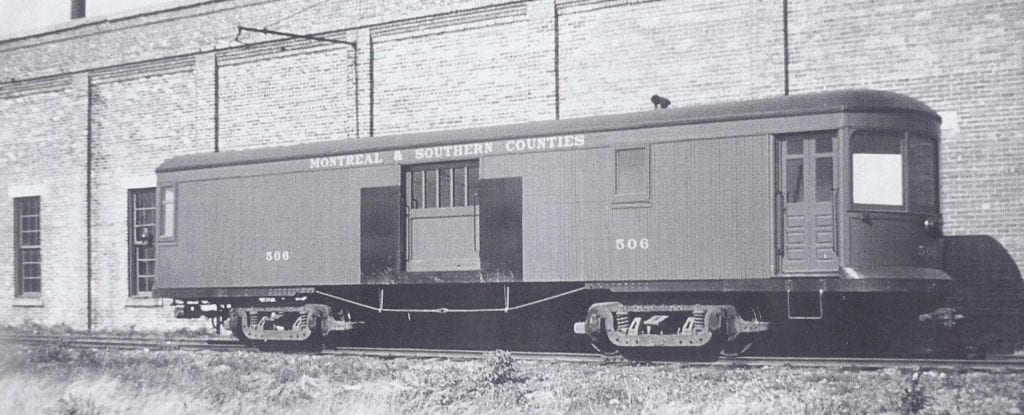
Wagon 506 was a Milk & Express Car on the Montreal & Southern Counties Railway. Here it rests at the company’s repair and maintenance yard in Granby.
Rodolphe Fournier, a notary in Marieville, describes the importance of the hay business to his father’s farm. The trains were their best way of transporting fodder to the United States in the 1920s: “The sale of hay made up a large part of our income—my father’s land produced a lot of it. Once the hay was dry, my father would hire a team that specialized in operating the hay presses, the balers. I remember two kinds of machine: one known as couchée because it was horizontal, the other known as debout because it stood up high, around fifteen feet. Both machines were operated by a capstan. A horse was hitched to the shaft of the capstan and made to walk in a circle. This powered the machine with enough force to squeeze the hay into a bale. Once the hay was pressed into bales, it had to be sold, and the largest market was the United States. There were traders who specialized as middlemen. My father made deals with several different traders. One of them was Paul Ashby, who was his brother-in-law. This trader would rent a large hay wagon and, at the agreed time, bring the bales to the station at Marieville. The wagon was brought up close to the open door and the car of the train would be loaded full with hay bales. I remember realizing how strong my father was. I saw him pierce a hook into each bale and launch it several feet up with a swing of his knee, to pile the hay higher and higher atop the wagon.”
These stops along the railway encourage people to establish businesses, workshops for craftsmen, a general store and sometimes even a post office. In 1918, at Ruisseau-Barré, we can find a small cheese and butter dairy owned by Joseph Gladu. Like many other entrepreneurs at the time, he realizes that the dairy industry is undergoing a profound transformation, and this will force a change in how farms operate. Forage crops must now be grown to feed the animals all year round and, as a result, the farms must have silos for storing the forage. New breeds of dairy cows (Ayrshire, Aberdeen Angus, Jersey, Guernsey and Holstein) are arriving which compete with the Canadian breed. As cheese and butter dairies multiply, domestic production of cheese and butter is steadily declining in favour of greater industrialization. In Rouville County in 1918, there are 31 such dairies.
During its 47 years of existence, the Montreal & Southern Counties Railway reports a number of railway accidents. They lead tragically to a total of nine deaths and to dozens of injuries. On September 10, 1956, at around 9:30 in the morning, a streetcar collides with a pickup truck. All five passengers, along with conductor Lionel Forest and motorman Adélard Beauchemin of Marieville, are injured in the crash.
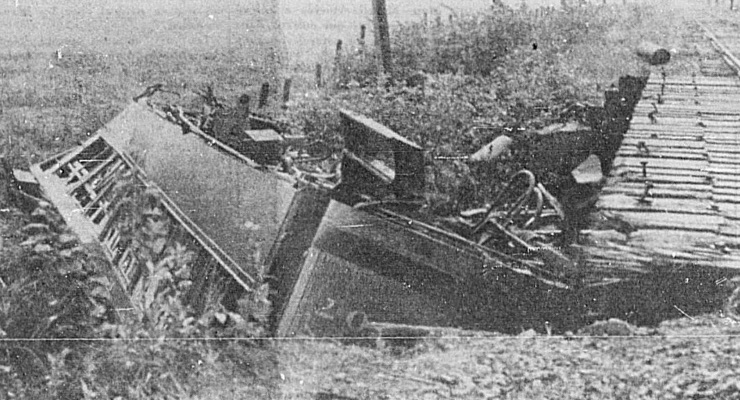
In 1956, following a collision, this streetcar crashed into a ditch near the level crossing at Chemin du Ruisseau-Barré.


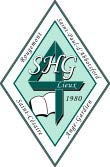
Research and text
Gilles Bachand, historian
Société d'histoire et de généalogie des Quatres Lieux
References and photographs (2020)
Archives of the Société d’histoire et de généalogie des Quatre Lieux
Archives of the Société d’histoire de la Seigneurie de Monnoir